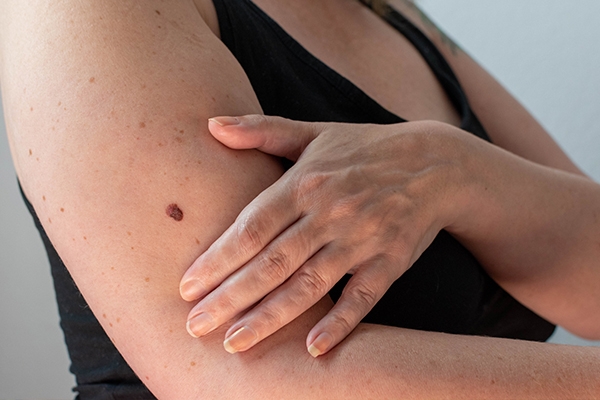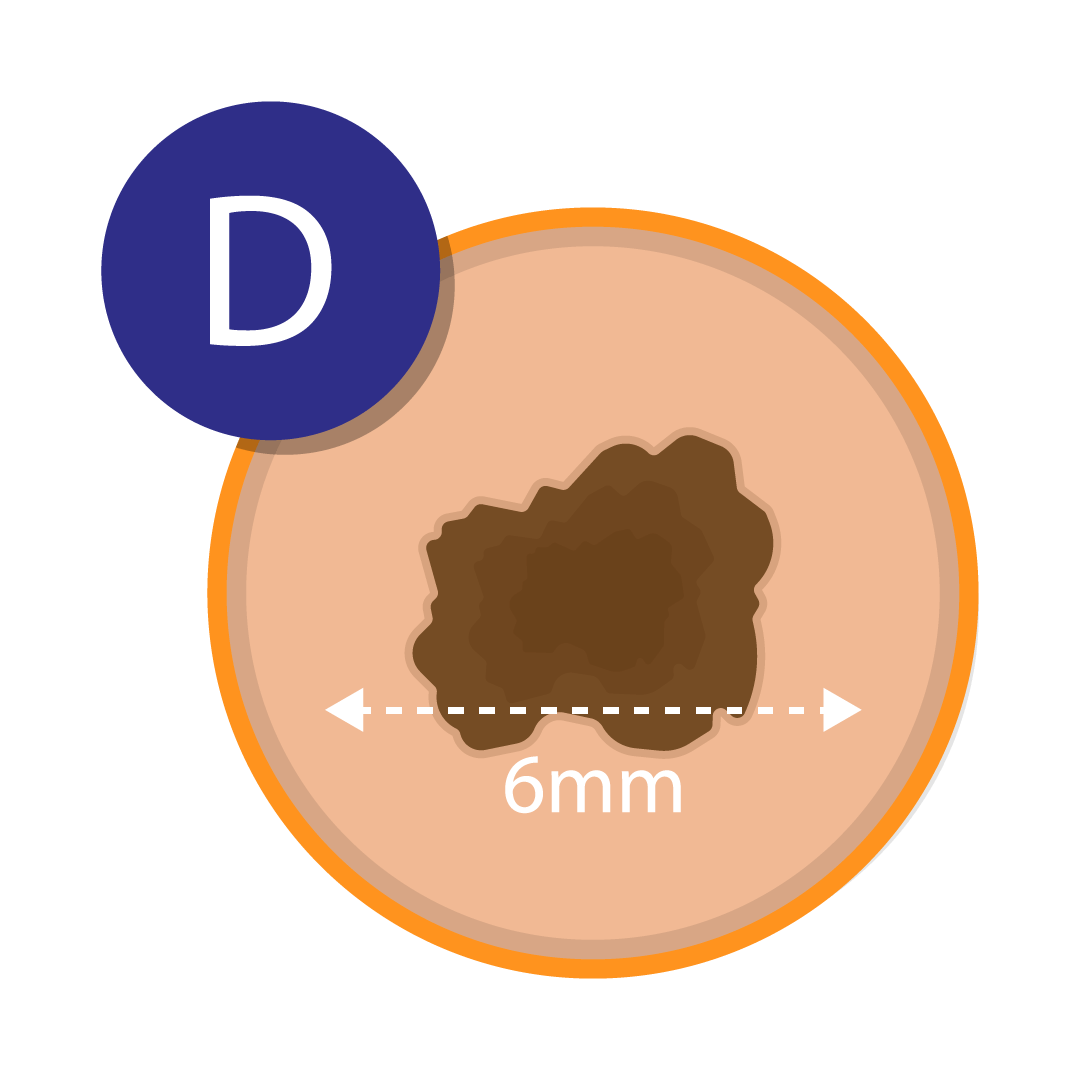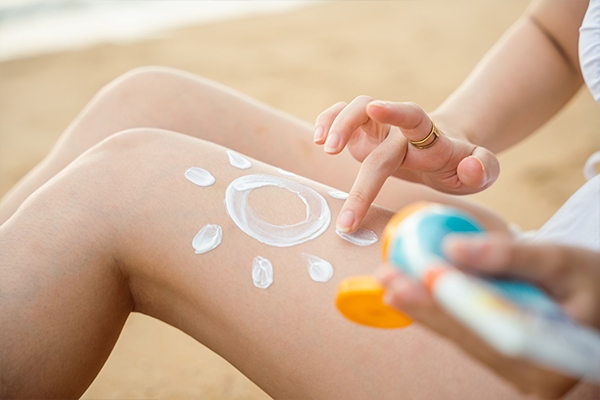Spot the Signs: A Simple Guide to Skin Cancer Exams

Indonesia is a tropical country with abundant sunshine. Sun exposure provides free vitamin D, which is good for bone health. However, excessive exposure is harmful to the skin. One of them raises the risk of skin cancer.
Skin cancer is a condition that involves the growth of abnormal cells in skin tissue. Usually, skin cells' aging and death lead to the development of new cells to replace them.
When this process is disrupted, for example, due to exposure to ultraviolet (UV) rays, skin cells can grow faster and uncontrollably. These cells may be benign (non-cancerous), which do not spread or cause damage. However, these cells can also be cancerous.
Skin cancer can spread to nearby tissues or other body areas if not detected early. However, most skin cancers can be cured if identified and treated early.
According to Globocan 2020 data, the incidence of skin cancer cases in Indonesia reached 18,000 people, with a mortality rate of around 3,000.
Initial examination
The leading causes of skin cancer are sun exposure and age. The risk will increase with age.
Whether you are at high risk of developing skin cancer or not, you should notice and be aware of the health of your skin, especially spots, non-healing wounds, and abnormal or changing moles.
Check your skin condition at least once a month. Stand in front of a mirror to see your entire body and check every aspect. This check includes your palms, feet, scalp, ears, nails, and back.
However, remember that not all new spots or moles are necessarily skin cancer.
The ABCDE approach can be used as a guide for self-examination:
A: Asymmetrical: Does the mole or skin spots become irregular or asymmetrical or have an indecisive limit?

B: Border. Does the border become unpleasant or jagged? The thicker from time to time?

C: Color. Is the color uniform? Is there a change in color from before? Maybe whitish, skin-colored, light brown, brown, or black.

D: diameter. Are the moles or spots measuring more than 6 millimeters or larger than peas?

E: Evolving. Has the mole or spots changed for the last few weeks or months?

You can also add several other questions, such as:
- Whether it appears after the age of 21
- It's easy to get hurt and difficult to get well
- Bleeding easily
- Feels itchy and painful even though some cancer does not show symptoms.
Types of skin cancer
1. Basal cell carcinoma
This cancer is the most common type of skin cancer, but it is also the most harmless. It develops on skin often exposed to sunlight, such as the scalp, face, nose, neck, and hands.
This cancer is often red and slightly prominent, with scaly areas that can bleed if hit. This cancer usually experiences ulceration when developing.
2. Squamous cell carcinoma
Squamous cell carcinoma is the second most common type of skin cancer. It often develops on skin exposed to sunlight, such as the face, ears, lips, back of the hand, arms, and feet. Squamous cell carcinoma often manifests as a wild or rough lump, red, bumpy, flat spots, dome-shaped lumps that are swollen and bleeding, or wounds that do not heal or heal but return.
3. Melanoma
Melanoma is a type of skin cancer that is rarely found but is the most dangerous. Melanoma multiplies and can spread to the moon within a few weeks. If detected early on, melanoma can be treated. However, if detected at an advanced stage, cancer may have spread to other parts of the body and can be fatal.
Melanoma appears as new or old spots, spots, or moles that change color, size, or shape. Flat melanomas usually have irregular and opaque outer lines and often more than one color. Even sunburn can damage skin cells and trigger melanoma.
Nodular melanoma is a hazardous form that looks different from general melanoma. It stands out and is evenly colored (often red or pink and some brown or black). This kind of melanoma spreads rapidly and can be life-threatening if it is not immediately detected and raised.
Prevention

Avoid sun exposure between 10:00 and 14:00 because it is hot. Wear clothes that protect your skin from the sun if you must leave the house. Use SPF15 sunscreen or higher to protect yourself from UVA and UVB rays. You should apply sunscreen 15 minutes before leaving the house and repeat every two hours.
1. Beware of drugs that increase sensitivity to sunlight.
2. Wear a wide hat to protect your face, head, ears, and neck.
3. Choose a healthy lifestyle.
Your behavior and habits impact your skin's health. Avoid smoking, as it can damage collagen and elastin. When caring for your skin, use gentle soap and a daily moisturizer. Also, limit a hot shower, as it can eliminate the skin's natural oils. Drink lots of water to stay hydrated, and sleep regularly so the skin looks fresh.
4. Perform skin examinations regularly.
Pay attention to any changes in moles, spots, or birthmarks. Monitor any new skin changes that arise. Schedule regular skin checks with a healthcare team or dermatologist.
5. Use sunglasses with UVA and UVB protection.
The correct protective sunglasses help protect the sensitive skin around your eyes from the sun's ultraviolet rays, which can cause cataracts.
Beware of moles, spots, and new or changed stains. Examine your skin in the mirror regularly. If you notice anything unusual, immediately see a doctor or visit the GWS Medika Clinic, a health clinic in Jakarta.



